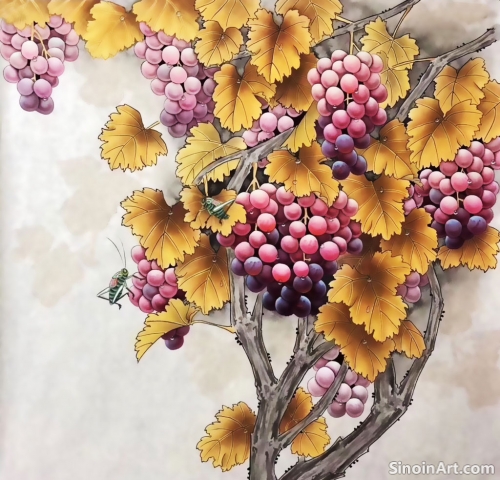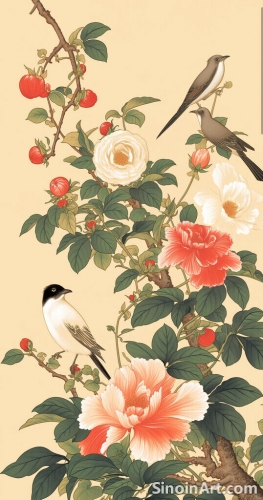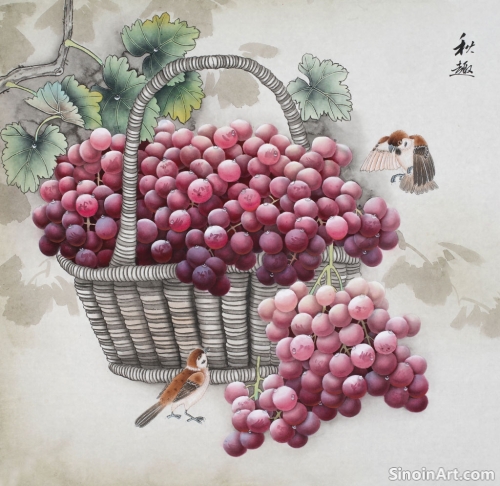Gongbi and the Art of Botanical Illustration
|
Gongbi painting, with its meticulous detail and precise rendering, is closely related to the art of botanical illustration. The attention to detail and the need for scientific accuracy mean that the techniques and aesthetic principles of Gongbi are very useful when depicting plants and flowers. Many Gongbi paintings could also be classified as botanical studies.  The creation of botanical illustrations using Gongbi techniques requires not only artistic skill but also a deep understanding of plant anatomy and morphology. The artists must accurately render the structure of the plants, from the intricate details of the leaves and petals to the form of the stems and roots. Detailed observation and study of the plant is essential to producing an accurate work.  The precise linework of Gongbi, using the “gougou” method, is particularly well suited for capturing the delicate details of botanical subjects. The fine lines delineate the edges of leaves, petals, and other plant structures with great precision. The outlines are the base for the rest of the painting.  The use of color is equally important in Gongbi botanical illustration. Artists carefully layer washes of color to capture the subtle variations in hue and tone, accurately representing the unique color palette of each plant. This technique creates both accuracy and visual depth in the work. The placement of plants in the compositions is also a part of the overall style. The arrangement of the leaves, flowers, and other elements of the plant creates a composition that is both visually appealing and botanically accurate. The style also often reflects the artist's aesthetic sensibility. The blending of art and science in Gongbi botanical illustration creates works that are both visually beautiful and scientifically informative. The blend of accuracy and artistic interpretation creates a unique and valuable approach to botanical illustration. The meticulous detail makes these paintings both beautiful and useful for study. |
Tag : Gongbi botanical, botanical illustration, plant art, flower painting, scientific art
Related information
- Gongbi Painting and the Use of "Boneless" Technique
- Gongbi Color Techniques: Layering and Luminosity
- Gongbi and the Depiction of Architecture
- Gongbi Painting and the Four Gentlemen: Symbolism in Nature
- Unveiling the Techniques of Gongbi: A Step-by-Step Guide
This article explores the “boneless” technique (没骨法) in Gongbi painting, highlighting how artists use color washes to create forms without preliminary outlines, adding softness, fluidity, and demonstrating a versatility within the art form.
Color, while carefully controlled, plays a vital role in creating the refined beauty of Gongbi painting. Unlike the spontaneous use of color in Xieyi, Gongbi artists employ a meticulous approach, building up their colors through numerous thin layers, and creating a sense of depth, luminosity, and subtle gradations of tone. This approach is a hallmark of the Gongbi style and contributes to the richness of its visual effects.
This article explores the depiction of architecture in Gongbi painting, highlighting the meticulous detail, historical accuracy, use of perspective, and interplay of light and shadow, showcasing how this art form captures both the physical appearance and cultural significance of buildings.
Explores the symbolism of the Four Gentlemen (plum blossom, orchid, bamboo, chrysanthemum) in Gongbi painting, highlighting their cultural significance and representation.
This article provides a step-by-step guide to the techniques involved in creating a Gongbi painting, covering the sketching, outlining, layering, shading, and final detailing stages.